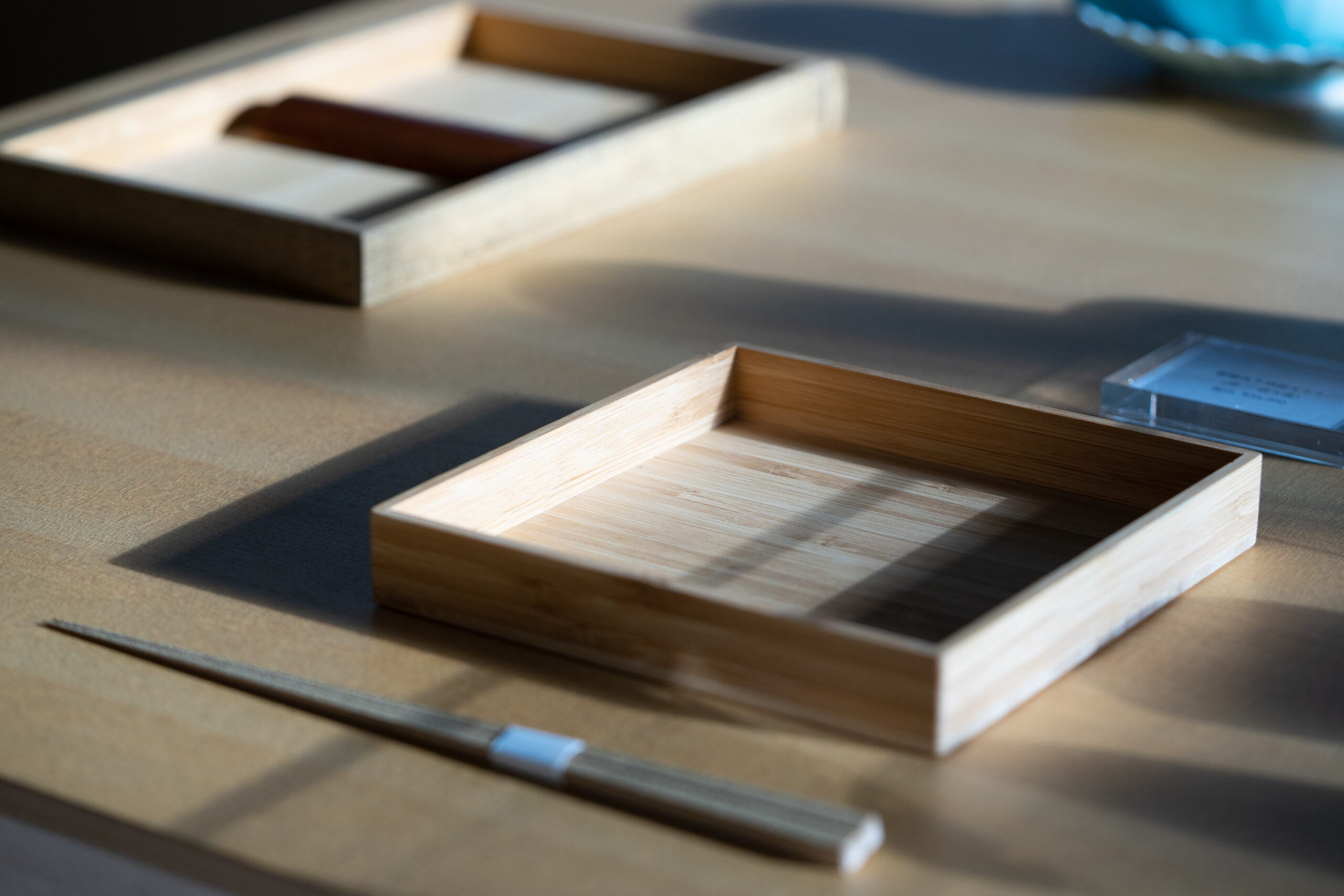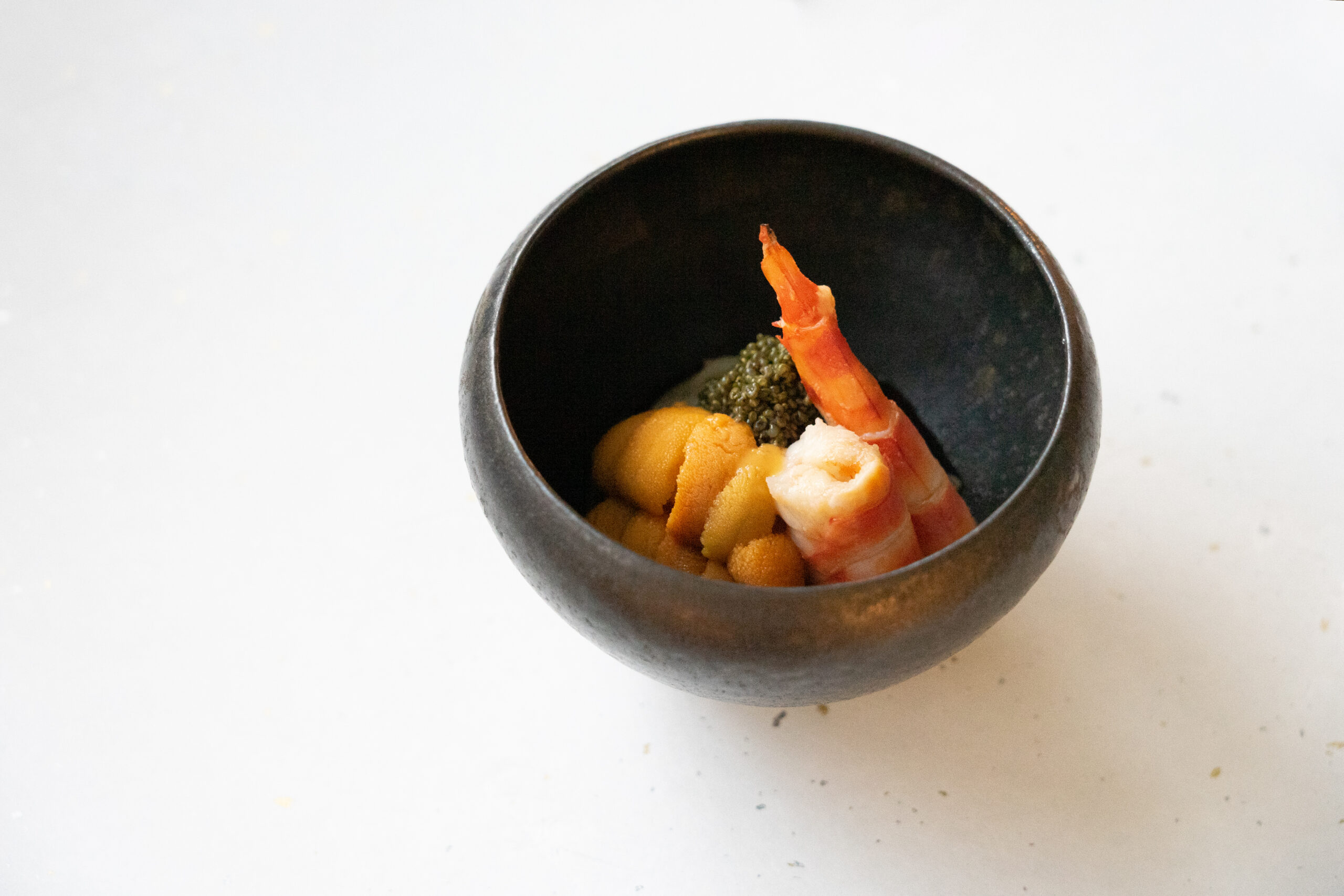One day, for no special reason, I stopped by a store and bought a bowl, which turned out to be so comfortable that I ended up using it for many years. Have you ever had such an experience?
Some of the bowls I use in my daily life are like that. Looking back, the store clerk explained to me the difference between each type of vessel, and I chose the one that best suited my taste. I feel a mysterious connection with that piece, because I would not have bought that one at the time without the clerk’s explanation.
We, as a gallery, are in the business of brokering such “connections.” For the gallery, a visitor may be one of many customers, but for the customer, each encounter with a piece of craftwork can be special. Like the artisans, each user has his or her own story, and it is our gallery’s important role to link the two halves of this story together.
Daily work
A crucial part of our daily work is cleaning the gallery. Every day, we check to make sure that the works are comfortably arranged. Many of the vessels are to be held in the hands and put to the lips, so they must be kept clean at all times. If we were not deeply engaged in our work, this cleaning part would be easy to neglect. Cleaning not only makes the space attractive, but also helps to calm one’s mind, and must be done with constant attention.
In addition, new works arrive at the gallery frequently, and it is important to attend to each of them with care. I photograph each piece myself, and doing so is a great opportunity for me to take a good look at each piece. This is also my favorite time, as it allows me to reflect on each piece, checking its individuality and thinking about how I would like it to be used and how I would like it to look from different angles.
The baton of the creator
The work of our gallery is often described as “telling stories.” This is certainly true, and we must be good storytellers, not only learning about the artisans and their works, but also continuing to refine our presentation and style of speaking.
We also take the desire of the artisans to “make the best thing they can” as a baton we are responsible for passing on. Because each item is made by human hands, we want to wrap it carefully, put it in a nice bag, and hand it directly to the customer. We then see them off with good wishes as they leave the store. Through each and every one of these actions, more “affection” is added to the product, and the creator’s baton is at last passed on to the customer with good feelings.
With the same passion as the artisan
There is something I always say to myself in working with crafts, which is to work with the same passion as the artisan. Our galleries are located in Tokyo and Singapore, both of which are urban places. In the city, many people may consider work to be just a way to make money, and many others may consider their life’s purpose to be career advancement or to buy time for hobbies. But what about artisans? Many good craftspeople, I believe, do not see a clear line between their lives and their work, but see work as something they do while living. As I think of the daily lives of these craftspeople, I remind myself that we are not the only ones who have to adjust to the city’s sense of time.
It is also generally believed that a craftsman becomes a full master of his craft after years of training. Because what he works with is a natural material, he must first make a number of them to be able to use the material. Since we are involved with such works as well, we, the sellers, need to develop our own expertise or sense of discernment over a similar number of years. Only after seeing and touching a number of works will we be able to truly appreciate their quality.
Crafts are not something that give rise to a suddenly exciting experience of daily life, but something that can only be appreciated over a long period of time, only after which will we fully realize its beauty and charm. Each daily step in this journey may be slow, but at some point, you will surely feel the importance of the path. That is the kind of culture and tradition that people create.
Yusuke Shibata



